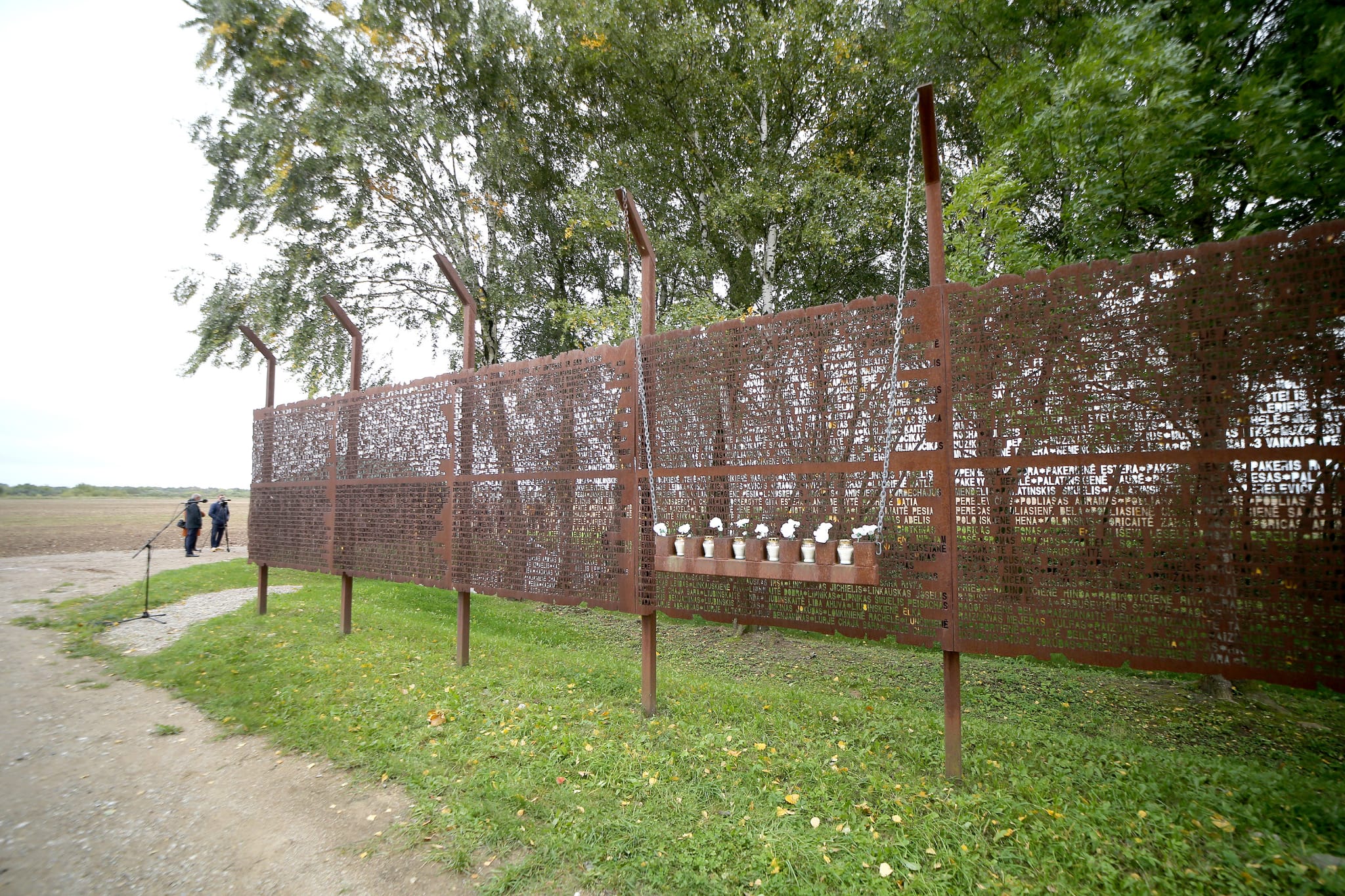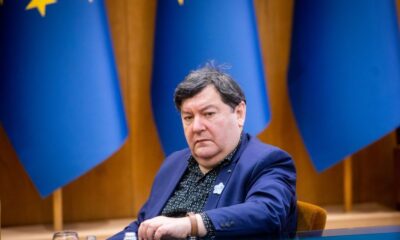
Personal Story

Winds of change move slowly through Lithuania
It’s almost impossible to comprehend that of the 220 000 Jews brutally killed and dumped in pits in 200 sites across Lithuania, most were killed within six months in 1941. But, hardest to comprehend is the fact that it represented close to 95% of Lithuanian Jews, killed by Nazi order, but mostly at the hands of Lithuanians.
In most towns and cities, Jews represented half or more of the population. Now, there are only a few hundred Jews living in Lithuania in mostly Vilnius and Kaunus.
Visiting Lithuania last week, I took painful journeys to three of the killing fields to try and comprehend and pay my respects to our people decimated during the Lithuanian Holocaust.
The first site, Ponary, was outside Vilnius, the capital, where 70 000 Jews (mostly from Vilnius) were murdered, mostly in 1941. How could I absorb this number of people, who were lined up in front of the pit and shot, then thrown into a pit with other dead bodies, or thrown into the pit and then shot. And before the next death group, the murderers, who were mostly Lithuanian, would throw chemicals over the bodies so they would disintegrate, and then they would shoot the next lot of Jews. And so it went on…
As we arrived at the large Jewish stone memorial – put up, I understand by Jewish benefactors – I heard what sounded like an eery wind blowing through the forest around me. Without thinking, I started whispering, “Yitkadal veyitkadash Shemei Rabba”. As I kept repeating it, almost to protect myself from this cold chill running through my body, the tears started running down my face.
I sobbed at the horror of this devastation of our people, whose lives were obliterated simply because they were born Jewish. It didn’t matter whether they were brilliant mathematicians, had fought for Lithuania, were talented artists or musicians. It didn’t matter if they were just a few months old, whether they were children who knew laughter, or men and women just trying to make something of their lives.
They were no longer just a number, they were individual Jewish people who had lives ahead of them and were never going to get a chance to realise their dreams, to enjoy the silly or wonderful things in life, who were never going to do anything again just because of hatred. Each one of them was innocent. Each one was terrified of what they knew was coming and had no way to escape it.
Each one of them was one of us. They were Litvak Jews, just like my family and me.
There but for the grace of G-d went my family, and I’m here to tell the tale.
I’m here to tell the tale of all 220 000 Jews who were killed in the most inhumane way. For too long, we didn’t know the truth of what happened to them or how they died.
After World War II, Lithuania was taken over by Soviet Russia and during that time, Lithuanians were apparently prevented from discussing what happened to the Jews until Lithuania’s independence in 1991.
In fact, on the memorial stones at the burial sites, other than the one put up by a Jewish benefactor, there’s no mention of one, let alone 70 000, Jews killed there. They speak about Soviets killed there, not Jews.
They also indicate that when the Nazis realised that the war was coming to an end in 1943, they came back to remove the traces of what they did at Ponary.
These memorial stones state that they (apparently Jewish prisoners) took what remained of the bodies out of the pits and crushed them to a pulp before burning them. Rather than take responsibility for this atrocity, they destroyed evidence of their heinous crimes.
The wind kept blowing, and as the long, tall trees moved in the breeze, it seemed that they were trying to tell me something. In that moment, I wondered if there were any birds or wildlife in this deathly place. And suddenly, I heard birdsong, as if to remind me that in spite of this horrific atrocity, we’re alive to tell the story.
Those monsters couldn’t destroy all the evidence because I know about it, and everyone who goes there knows about it too. And in spite of whether anyone ever gets punished, it will never be forgotten.
I visited the Ninth Fort, the killing fields outside Kaunas (or Kovno in Yiddish), the second biggest city in Lithuania. This place, also out of town, was once a prison and used for political and other prisoners before it became a killing field mostly for Jews during the Holocaust.
The history of the place was less focused on the Holocaust, but not any less horrific. It was around 28 October 1941 when Jews were squashed into the outside yard of the prison without food or water until it was their time to be marched off to the killing field.
Once again, I could hear that low drone that sounded like wind, but there wasn’t a breath of a breeze in the air.
We walked through the jail, in which there are several Holocaust exhibitions, which gave visual evidence to something that, for me, didn’t need it. I’m sure that many people arrive here, and the exhibitions give them food for thought and an understanding of the horror.
It’s hard not to be horrified on hearing that on the first day of killing Jews from Kovno, they outdid themselves and any other Holocaust killing field at that time by managing to murder 9 200 Jews in one single day on 29 October 1941 at Ninth Fort. What a revolting accomplishment!
And it went on from there.
Walking toward the killing field, I went cold as I heard the guide in the background going on about related information. He described a massive 32m-high concrete commemorative statue in front of us.
I looked ahead to where he said the killing fields were and all I saw was a beautiful, green, well-mown lawn. I kept looking further, hoping to see something that would shock me. But that was it. I was shocked that there were no visible pits or plaques or anything vaguely resembling the horror that lay under the ground. In fact, there were little children riding bicycles on the grass. I guess that was how they wanted to interpret what had happened, but for me, it felt sanitised.
The sole reference to what happened was a simple plaque saying, “This is the place where Nazis and their assistants killed about 45 000 Jews from Lithuania and other European countries.”
I still heard that droning, but if not for that, I could have been having a lovely walk in a park, not visiting the site of at least 30 000 Jews, mostly Litvaks, whose lives were terminated because of being Jewish.
It didn’t help that the guide kept referring to “the people” killed by “the Nazis”, and rarely referred to the fact that 30 000 of those people were Jews who were mostly killed by Lithuanians civilians, not Nazis.
I left feeling more angry than sad. I left despondent at the fact that, though there appears to be a clear move by the government to acknowledge what was done at the hands of Lithuanians, I wasn’t seeing enough of it.
I was dreading my personal journey to Keidanai, where members of my own family had been murdered in killing fields.
When we got out the car at the outskirts of Keidan, again I heard that whistling wind, but there wasn’t a breath of wind to be felt. In fact, as I stood in front of a metal memorial wall to the Jewish inhabitants from Keidan who were brutally murdered, I was battling for breath. It felt like someone had vacuumed the air out of me. Then I saw my family’s names that had been cut out of the metal. Hirshash Krostas, Nisanas Krostas, Srage Krostas, and Zundelis Krostas.
Zundel wasn’t even 10 years old when he was murdered at this site. My guide, Rimantas Zirgulis, the director of the Kedainai Regional Museum, explained that 2 076 Jews had been killed at this site – representing all the local Jews – in one day. Through research, he and his team found more than 1 000 names of Keidanians who were murdered there that day. Their names are on the metal memorial wall. They’re still trying to find the others so they can complete the wall.
What was a space where the pit had once been (100m-long, 4m wide, and about 1m deep) was a beautiful green scar of grass situated between two rows of trees with a dignified stone, grave-like memorial at the one end and another creative memorial at the other.
As devastating as being there was, I felt that nobody was hiding that these were Jewish people who were murdered and there was a real attempt to honour each individual at least with their names.
There’s no way to change this history. These people are gone, and Lithuania is missing a vibrant, exciting, phenomenal community of Jews. Their loss is evident to me all around the country.
But the Lithuanians need – as they have done in Keidan – to do everything they can to acknowledge what they did and truly honour those lives they destroyed.
The winds of change are slowly moving through Lithuania. There seems to be genuine commitment at least to acknowledge guilt on the part of Lithuania as to its involvement. I have the commitment of several parliamentarians that this is just the beginning, and that they will acknowledge the truth of what was done and teach the population, starting with children, about what really happened.
However, as we move into Yom Hashoah 2023, almost 82 years since the worst of the Holocaust in Lithuania, I believe this needs some real momentum.











rosalie Donadio
April 20, 2023 at 4:38 pm
My great uncle (who had returned from America – the only one of seven siblling – died there with his family in August of ’41. I even have photos from April of ’41 visiting at his mother’s grave courtesy of the Sandler Brothers of Israel (originally South Africa); they are the family who provided the stone memorial to Birze. I grew up outside of Boston in a community whose nickname was “little Lithuania” …. where mostly everyone spoke with the same dialect; I still have problems understanding other dialects and Litvak makes the most sense to me. My grandmother Hutka used to say that not only are Litvaks smarter, they are better looking. (She never spoke more than a dozen words of English, but where we lived and the time we lived in, that was not necessary. And once I had great hope for humanity, a hope that time and knowledge would prepare us for a better world however, I realize that this is not possible; that perhaps it was never possible and Jews, have been processed through evolution for survival should recognize this. My biggest disappointment is the intertribal fighting going on in Israel — salaciously welcomed by “the usual suspects”.
David Schlapobersky
April 22, 2023 at 11:37 am
Hello and greetings again from Swellendam in the Western Cape.
Once again thank you for this article!
We are aching to make the trip to see the city of Keidan (Keidainiai) where my grandfather was born, and other important sited in Lithuania.
Best wishes
David
Judith dittrich
May 28, 2023 at 4:40 pm
Vilnius was part of Poland before the war, and Polish been the one that helped to kill the Jewish people there including my grandparents